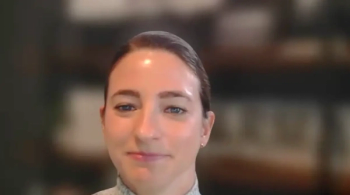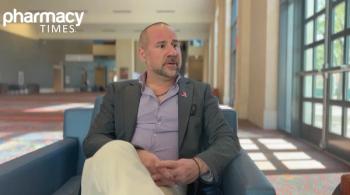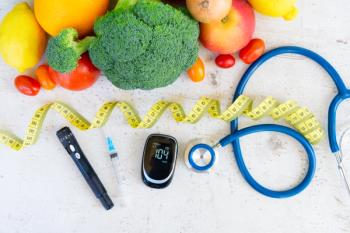
PEAM, BEAM Regimens Show Comparable Efficacy In Patients With Hodgkin, Non-Hodgkin Lymphoma
Replacing carmustine with cisplatin in BEAM ((carmustine, etoposide, cytarabine, and melphalan) conditioning could be more cost-effective for patients.
The PEAM (cisplatin, etoposide, cytarabine, and melphalan) and BEAM (carmustine, etoposide, cytarabine, and melphalan) autologous hematopoietic stem cell transplantation (auto-HSCT) treatments had similar outcomes and comparable efficacy in both Hodgkin lymphoma (HL) and non-Hodgkin lymphoma (NHL), according to the results of a study published in Transplantation Proceedings.1
High-dose chemotherapy followed by auto-HSCT is the established standard for both HL and NHL in the relapse or refractory setting. BEAM is a frequently employed conditioning therapy regime; however, access to carmustine is limited by low supply and high costs, which forces substitution with BEAM-like therapies.1
For example, in their trial comparing BEAM to a similar therapy, Devici et al. replaced carmustine with the alkylating agent thiotepa to create the TEAM regimen, which they found had comparable efficacy to the original BEAM therapy.3
Cisplatin, a platinum-based agent, was utilized in conjunction with etoposide, cytarabine, and melphalan to comprise PEAM in the investigator’s institution. They led a single-center, retrospective safety and efficacy comparison of PEAM vs BEAM conditioning for auto-HSCT in lymphoma patients.1
Across the study, 143 patients were enrolled, with 55 (38.5%) having a HL diagnosis and 88 (61.5%) being diagnosed with NHL. Most of the participants were in complete response while undergoing auto-HSCT (n = 113, 79%).1
BEAM conditioning was undergone by 47 (32.9%) patients while 96 (67.1%) were treated with the PEAM regimen. PEAM showed a significantly lower time to neutrophil engraftment (NE) and platelet engraftment (PE), though patients in the PEAM arm of the trail received a higher dose of CD34+ cells compared to BEAM, according to the investigators.1
At day +100 post-transplant, the overall response rate (ORR) was 72.34% for BEAM and 86.46% for PEAM, with no statistically significant difference observed (P = .0630). In both conditioning regimens, febrile neutropenia and gastrointestinal toxicities were the most prominent adverse effects.1
As for relapses, there were 26 post-transplant relapses recorded, with an overall relapse rate of 18.2%. In the PEAM group, 14.6% (n = 14) experienced a relapse, while 25.5% (n = 12) relapsed in the BEAM group.1
In a sign of the regimens’ effectiveness, the median overall survival (OS) was not reached; 25 total deaths were documented, with 15 linked to disease progression and 7 to infection. However, in log-rank curve comparisons, patients who received PEAM had a higher OS compared to those being treated with BEAM (P = .0068).1
In previously conducted trials, BEAM has demonstrated an ORR of around 80%. Caballero et al. found that BEAM therapy followed by auto-HSCT led to 78% OS and 81% disease-free survival (DFS) at the 3-year mark, with similar DFS reported for patients with early or late relapse (95% and 93%, respectively).1,2
Devici et al. compared the BEAM regimen with TEAM and found a 70.3% CRR in BEAM, in addition to a 3-year survival rate of 67% and a 5-year survival rate of 58%. The similar BEAM response rates across these trials are like that of the current results regarding PEAM.1,3
As previously mentioned, the accessibility of carmustine is a major obstacle for patients who need BEAM therapy, especially in areas with limited health care resources. Data from Mexico’s national health care system shows a stark cost disparity, with carmustine for BEAM reaching costs of up to $8000 while the cisplatin dose for PEAM conditioning costs only $16.39.1
More widespread use of replacements of carmustine could be cost-effective and more accessible to patients.
“These results provide the foundation for further exploration and consideration of PEAM as a feasible and advantageous conditioning regimen in the context of auto-HSCT for patients with lymphoma, potentially even in an outpatient setting, warranting further investigation,” the investigators concluded.1
References
1. Acosta-Maldonado BL, Padilla-Ortega A, Fernandez-Vargas OE, et al. Cisplatin as a viable and secure alternative to carmustine in BEAM-based conditioning for autologous hematopoietic stem cell transplantation in patients with lymphoma. Transplant Proceed. 2024. doi:10.1016/j.transproceed.2024.05.034
2. Caballero MD, Rubio V, Rifon J, et al. BEAM chemotherapy followed by autologous stem cell support in lymphoma patients: analysis of efficacy, toxicity, and prognostic factors. Bone Marrow Transplantation. 1997;20:451-458.
3. Devici B, Ateşoğlu EF, Bayrak E, et al. Comparative efficacy and safety of BEAM and TEAM conditioning regimens for autologous stem cell transplantation in lymphoma patients. Transplant Proceed. 2023;55(1):235-241. doi:10.1016/j.transproceed.2022.12.001
Newsletter
Stay informed on drug updates, treatment guidelines, and pharmacy practice trends—subscribe to Pharmacy Times for weekly clinical insights.


















































































































































































































